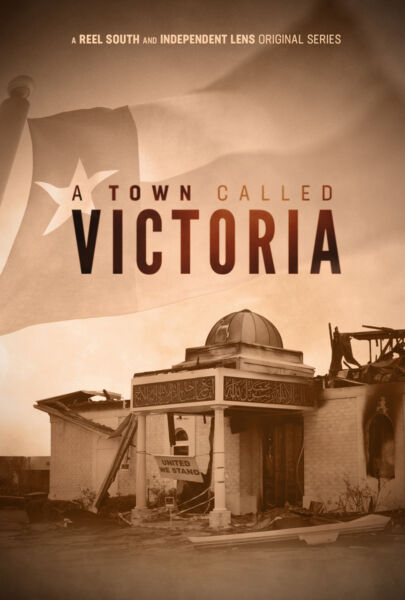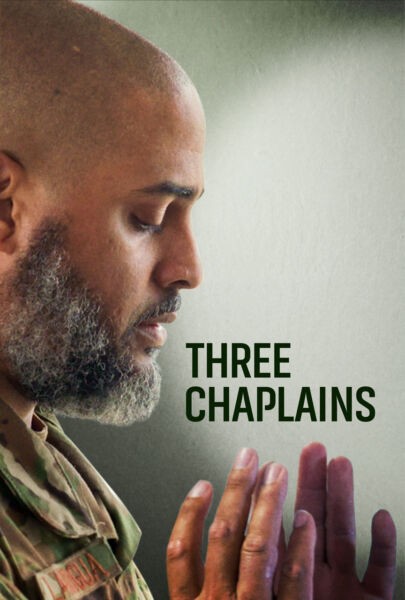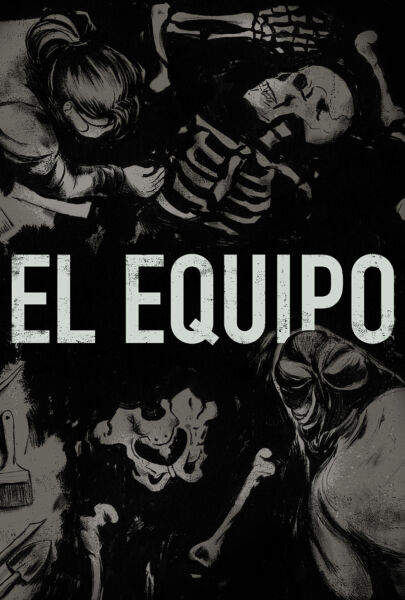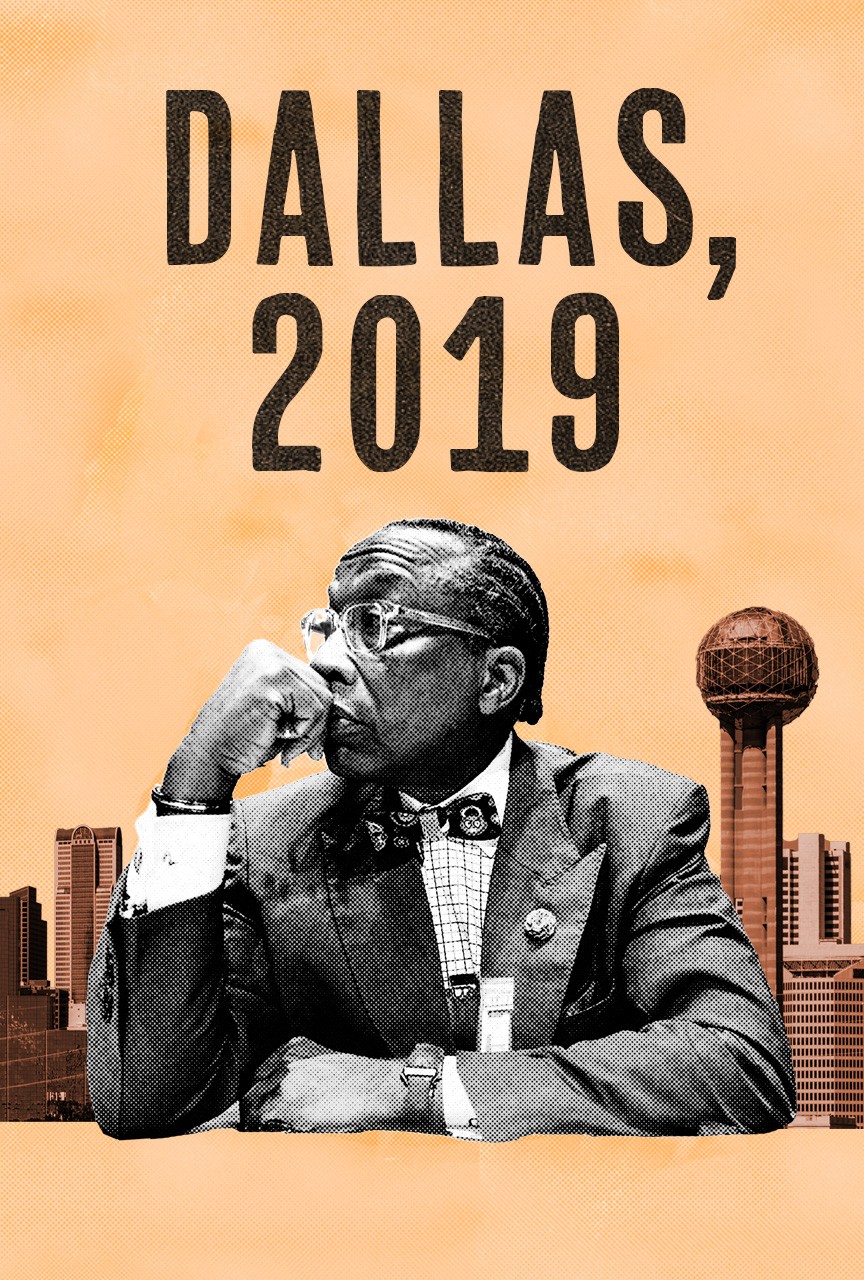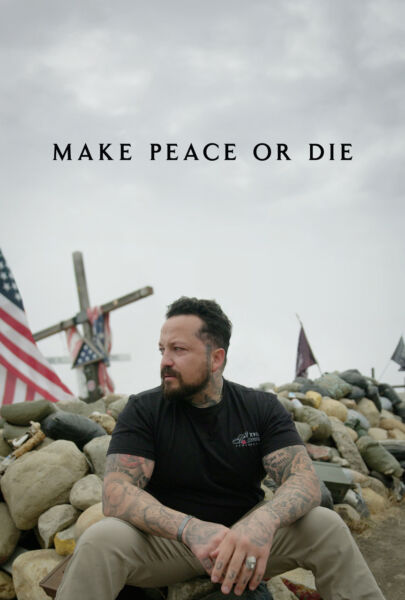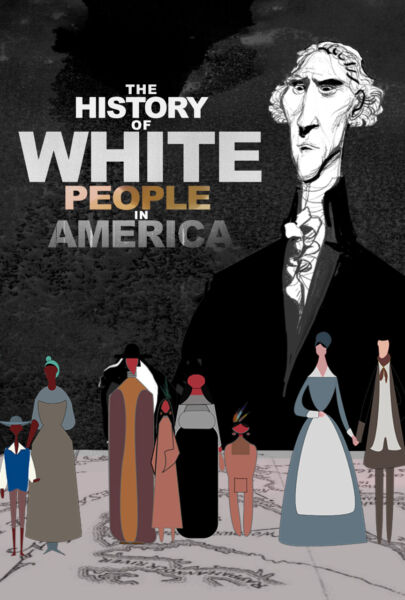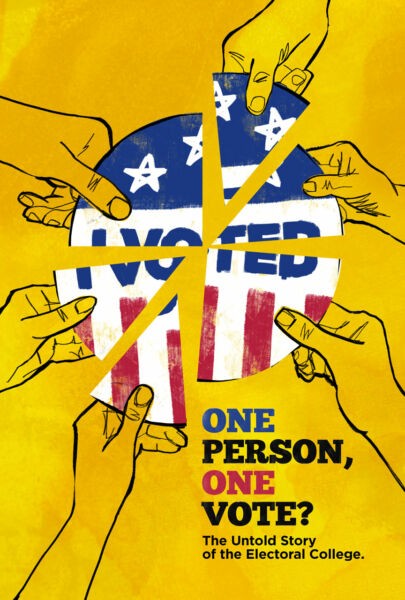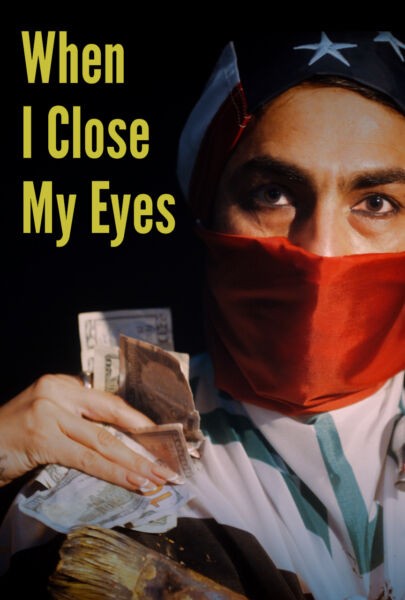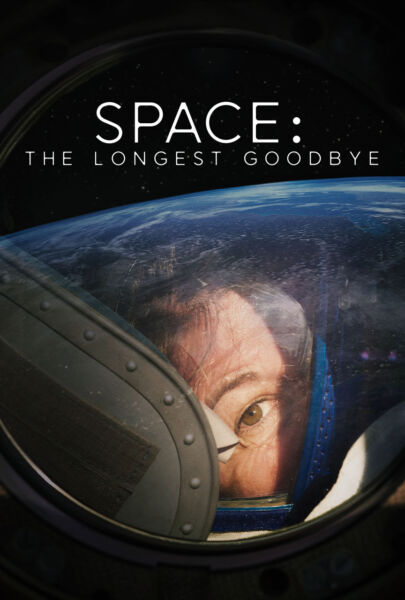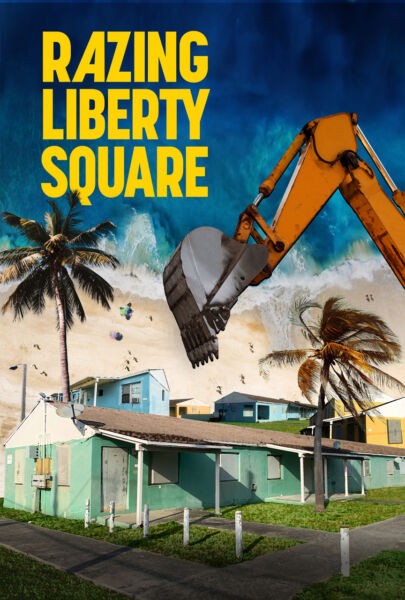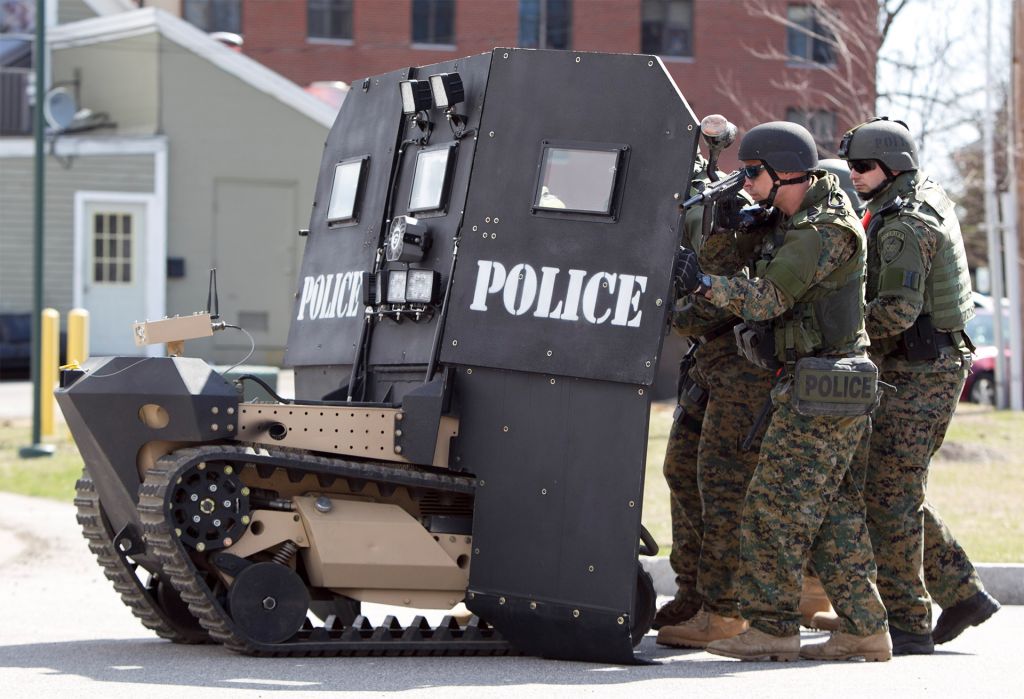
When former Davis County Sheriff William “Dub” Lawrence, the subject of the Independent Lens film Peace Officer, established one of Utah’s first SWAT teams in 1975 he initially required a four-officer unit, but he could only find three men in his department who met the physical fitness requirements. Forty years later the Davis County SWAT Team has 22 officers and averages over 60 operations a year, most of them no-knock search warrants.
As we witness in Peace Officer, the use of SWAT has increased exponentially — often to serve no-knock search warrants — with the prosecution of the War on Drugs. The rise of SWAT operations have brought an evolution in SWAT weapons and vehicles, much of them handed down from the U.S. military via the controversial “1033 program.” Below we take a non-comprehensive look at how some equipment has changed since SWAT teams emerged in the 1960s.
Primary Weapon
In the early days of SWAT, when Chief Daryl Gates first added the paramilitary outfit to the LAPD as a response to the 1965 Watts Riots, operations were surprisingly loose. “There was no budget for weapons and equipment, so members were required to bring their own,” Matthew Fleischer reported in the April 2011 issue of the Los Angeles Times Magazine*. One officer “had an M-1 carbine he had ordered through the mail.” The M1, one of the U.S. military’s standard rifles during World War II, is a lightweight .30 caliber semi-automatic fed by 15- or 30-round detachable box magazines.
Within a few years, SWAT teams began arming themselves with the same enhanced firepower American troops carried into combat in Vietnam. The M16A1 assault rifle, capable of firing 650 – 750 rounds per minute, appeared during the first high-profile SWAT operation, when 200 LAPD officers surrounded the Southern California Headquarters of the Black Panther Party and engaged its armed occupants in a four hour shootout. Miraculously, no one was killed in the mayhem.
Descendents of the M16 remain law enforcement’s rifles of choice. In 2011, the Center for Investigative Reporting visited the annual International Association of Chiefs of Police and discovered that Colt’s M4 — “closest to what the military uses” — was the preferred assault rifle among cops. The M4 is smaller and lighter than its Vietnam War predecessor, and capable of firing 950 rounds per minute. In September of this year, the M4 will become the primary personal weapon of the U.S. Marine Corps.
Body Armor
In 1974, the LAPD engaged six members of the militant Symbionese Liberation Army in one of the nation’s largest law enforcement shootouts. Five hundred patrolmen and 19 SWAT officers were completely unprepared for the automatic rifle fire sprayed at them from a South Central bungalow. Crouching behind parked cars, they quickly drained their ammunition and resorted to lobbing tear gas grenades at the barricaded home. Some of the gas grenades bounced off the house and rolled back behind police lines, disrupting their own operations.
Now police forces deploy without lacking for personal equipment. The images of militarized police that emerged from protests in Ferguson, Missouri after the killing of unarmed teenager Michael Brown, sparked outrage across the U.S. Business Insider journalist Paul Szoldra commented: “Their uniform would be mistaken for a soldier’s if it weren’t for their “Police” patches. They wear green tops, and pants fashioned after the U.S. Marine Corps MARPAT camouflage pattern.”
Armored Vehicles
Some early SWAT vehicles weren’t much more impressive than the armored delivery truck awkwardly skidding down empty LA streets in the opening credit sequence of the mid-1970s TV series S.W.A.T. Pictured below is a 1970’s-era van that belonged to the Lake County, Ohio Sheriff’s Department. One imagines its previous incarnation as an ice cream truck.
SWAT fleets bulked up in the 1980s when police departments began acquiring Cadillac Gage Rangers primarily used by the Air Force.
The highest profile rig — the industry / law enforcement term is “armored rescue vehicle” (ARV) — is manufactured by Massachusetts-based Lenco, which has provided 5,000 armored vehicles for military and law enforcement use around the world since 1981. Their cuddly-named BearCat actually stands for Ballistic Engineered Armored Response Counter Attack Truck, and its appearance in Ferguson with snipers training rifles on protestors from its roof drew heavy criticism.
In Northern California, Salinas PD, which is struggling with a vicious gun violence epidemic, upstaged the BearCat in 2013 when the department replaced its converted 1986 armored money carrier with a 37,000 lb. behemoth formerly used by the military in Iraq and Afghanistan. The new truck can withstand rocket-propelled grenades.
The ratcheting up of militarized equipment on public display led President Obama last year to issue an executive order limiting federal funding for law enforcement use of “equipment made for the battlefield.” The President conceded, “We’ve seen how militarized gear can sometimes give people a feeling like there’s an occupying force, as opposed to a force that’s part of the community that’s protecting them and serving them.” However, Obama’s order doesn’t cover the BearCat. Only vehicles that “utilize a tracked system instead of wheels for forward motion,” like tanks, fall under restriction.
The tank ban will rein in some of the more extreme examples of armored police vehicles that have reached police fleets. During the Ferguson furor, journalist Radley Balko, featured heavily in Peace Officer, dug up an alarming video of the Doraville, GA SWAT team rumbling in a mine resistant vehicle fit for an invasion.
The debate over the militarization of law enforcement weapons continues. Earlier this year, the Los Angeles Unified School District announced it would return automatic weapons, grenade launchers, and a mine resistant vehicle it had obtained from the military. School board members assured protestors that school police will no longer participate in the 1033 program.
For more on police reform, explore FRONTLINE’s Policing the Police.


